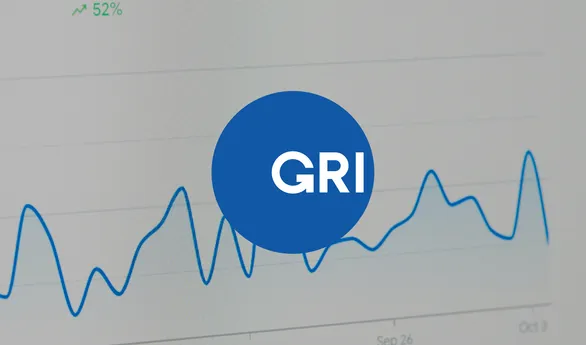In an era of heightened environmental consciousness, the issue of greenwashing has become a pressing concern. While consumers prioritize sustainability and seek genuinely eco-friendly options, businesses face the challenge of authentically aligning their practices with environmental values. This blog post aims to shed light on the concept of greenwashing, its detrimental impact on consumer trust, and, most importantly, how businesses can avoid falling into this ethical trap.
What is greenwashing?
Greenwashing refers to the act of misleading consumers about the environmental practices or attributes of a product, service, or company. It involves making exaggerated, false, or misleading claims to create an illusion of sustainability. Greenwashing can take various forms, such as vague or unsubstantiated environmental claims, irrelevant endorsements, or the highlighting of a single eco-friendly aspect while ignoring the overall negative environmental impact.
What is the difference between green marketing and greenwashing?
The difference between green marketing and greenwashing lies in your intentions and the authenticity of the green claims you make as a business. Green marketing refers to your legitimate promotion of environmentally friendly products, services, or practices. It involves transparently communicating the positive environmental attributes of your offerings while adhering to ethical practices. Green marketing aims to educate and inform consumers about your genuine sustainability efforts and your commitment to minimizing your environmental impact.
On the other hand, greenwashing, also known as ‘green sheen,’ refers to the deceptive and misleading practices employed by businesses to create a false impression of being environmentally friendly.
What is the difference between intentional and unintentional greenwashing?
Intentional greenwashing refers to a deliberate and conscious effort by a company to create a false perception of environmental responsibility. These companies engage in deceptive marketing tactics, such as making exaggerated or false claims about their environmental practices or products. They may manipulate information or use vague terms to mislead consumers into believing that their business is more eco-friendly than it actually is. Intentional greenwashing is driven by a desire to capitalize on the market demand for sustainable products, enhance public image, or deflect scrutiny from their actual environmental impact.
On the other hand, unintentional greenwashing occurs when a company makes misleading environmental claims or misrepresents its sustainability efforts without intending to deceive consumers. It often arises from a lack of understanding or knowledge about the complexities of sustainability or inadequate communication practices. Unintentional greenwashing can stem from a genuine desire to improve environmental performance but without the necessary rigor or transparency in evaluating and communicating their efforts accurately.
What are some examples of greenwashing?
Misleading green claims
Companies may make exaggerated or false claims about their products' environmental benefits. For instance, a cleaning product labeled as "100% natural" may contain harmful chemicals, while claiming to be environmentally friendly.
Corporate environmental performance
Some companies may a bold environmental marketing claim based around a single initiative while downplaying other unsustainable practices. For example, an oil company might heavily promote its investments in renewable energy, giving the impression of being environmentally responsible, while ignoring the negative impacts of its core business on climate change.
Green products that are not necessarily environmentally preferable
Certain products may be marketed as "green" or "eco-friendly" without clear evidence to support these claims. For instance, disposable water bottles made from biodegradable plastic may still contribute to waste and pollution if not properly disposed of.
False claims of certification
Companies may falsely claim to have received certifications or endorsements from reputable environmental groups. This misleads consumers into thinking that the product meets strict environmental standards when, in fact, it does not. Such false claims erode trust in both the brand and the legitimate certifications.
Ambiguous environmental labeling
Vague and ambiguous terms, such as "natural," "green," or "environmentally friendly," can be misleading. Without specific information or evidence to back up these claims, consumers may be misled into purchasing products that are not as environmentally friendly as they assume.
What are some of the consequences of greenwashing?
Greenwashing can have a number of serious consequences for businesses, some of them quantifiable, others less so.
A brand reputation in pieces
Greenwashing can significantly harm your brand's reputation in several ways. When consumers discover that you’ve engaged in greenwashing, it erodes their trust and undermines the credibility you have worked hard to establish. Greenwashing creates a sense of deception and dishonesty, making consumers question the authenticity of your green claims and your commitment to sustainability.
This negative perception can lead to a loss of customer loyalty and advocacy, as consumers feel betrayed and are likely to switch to more trustworthy and genuinely sustainable alternatives. Moreover, in today's era of social media and online reviews, news of greenwashing can spread rapidly, resulting in negative publicity and damaging your brand's image.
Legal action related to advertising
In the US, complaints regarding greenwashing can be filed by advocacy groups under advertising regulations that prohibit false or misleading green advertisements. These complaints can be made without the need to prove that a specific individual was actually misled. Additionally, consumer protection laws have been used as a basis for greenwashing claims. Typically, consumer claims manifest as class action lawsuits, enabling plaintiffs to represent similarly affected consumers, potentially leading to substantial claims and damages running into millions.
In the UK, the Consumer Protection from Unfair Trading Regulations prohibits unfair commercial practices, including misleading actions and misleading omissions. Greenwashing practices can be considered a breach of these regulations, and companies engaging in such practices may face legal consequences, including fines and sanctions from regulatory authorities like the Competition and Markets Authority (CMA).
In France, the French Consumer Code includes provisions that protect consumers from misleading advertising and commercial practices. Greenwashing can be considered a violation of these provisions. The French Directorate General for Competition, Consumer Affairs, and Fraud Control (DGCCRF) is responsible for enforcing consumer protection laws and can take legal action against companies engaged in greenwashing.
Litigation related to securities
Greenwashing can also have repercussions in the form of securities litigation. This is because companies engaging in greenwashing may experience an artificial increase in their stock value due to customers and investors favoring businesses with strong environmental credentials. In the US, the Securities and Exchange Commission (SEC) has expressed its intention to scrutinize firms' processes and practices in relation to their disclosures. It will review fund advertising to identify any false or misleading statements and assess proxy voting policies and procedures to ensure alignment with stated strategies. In 2021, the SEC established a Climate and ESG Enforcement Task Force to investigate instances of misconduct related to environmental, social, and governance factors.
How can you avoid greenwashing?
To ensure your business is perceived as socially responsible and environmentally sustainable, it is essential to avoid misleading environmental claims. By adopting transparent and evidence-based practices in your communication, you can demonstrate your commitment to addressing the pressing issues of climate change.
Here are key strategies to align your sustainability claims with genuine environmental credentials:
Educate all your internal stakeholders about greenwashing
Provide comprehensive training on sustainability and environmental practices to all levels of your organization – from the CEO to the marketing and communications teams. You can empower your Chief Marketing Officer (CMO) and Chief Communications Officer (CCO) to become the new heroes in the fight against greenwashing. Most instances of greenwashing are not intentionally orchestrated by the company as a whole, but are caused as a result of misleading marketing claims. By educating and raising awareness within these departments, you can take significant strides in ensuring transparency and authenticity in your sustainability initiatives.
Set science-based targets for sustainability
By adopting science-based targets, based on the latest research, your business shows a commitment to environmentally responsible practices. These targets encompass various environmental aspects, not just carbon emissions, and demonstrate a holistic approach to sustainability.
Be transparent in your environmental claims
Practice transparent communication by providing concrete and verifiable information about your sustainable initiatives, practices, and achievements. Avoid exaggerated or vague statements, using clear and specific language instead. Transparent communication builds trust and informs consumers and stakeholders to make informed decisions.
Embrace a holistic approach to sustainable practices
Avoid greenwashing by considering the entire lifecycle of your products or services. Evaluate the environmental impact from sourcing to disposal, identifying opportunities for improvement and implementing strategies accordingly. By showcasing a comprehensive approach to sustainability, you strengthen your environmental credibility.
Leverage reliable third party certification
Seek reliable third-party certifications and verifications to validate your sustainability claims. These external validations, such as eco-labels or life-cycle assessments, add credibility to your environmental marketing claims and reassure consumers of your genuine commitment to sustainability.
Measure, monitor, and report
Implement robust measurement, monitoring, and reporting mechanisms to track your environmental performance. Regularly assess key metrics like energy consumption, carbon emissions, waste management, and water usage. Transparently report your progress and areas for improvement to stakeholders, demonstrating transparency and accountability in your sustainability efforts.
By adopting these strategies, your business can establish genuine environmental credentials, avoid greenwashing, and attract environmentally conscious consumers who appreciate your commitment to sustainability.
Why carrying out a carbon footprint assessment is a good start to preventing greenwashing
Carrying out a carbon footprint assessment is a crucial and effective step for you to prevent greenwashing while addressing environmental issues and ensuring accurate representation of your sustainability credentials. By quantifying the greenhouse gas emissions associated with your business operations and the lifecycle of your products or services, you can gain valuable insights into your environmental impact and prove that you're a sustainable brand. It's also a key way to demonstrate your corporate social responsibility and commitment to addressing global warming. It will also enable you to make informed comparative claims, showcasing your environmental performance against industry benchmarks and identifying areas for improvement. Be sure to share your findings as part of the above-mentioned training delivered to all internal stakeholders.
Get started with Sweep’s personalized analysis of your current climate strategy.




